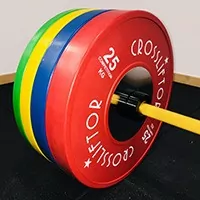How to choose a jump rope
The most important thing when choosing a jump rope for training is to determine how you're going to use it, bearing in mind your future needs. In fact, there are intermediate models that allow you to practice your rope exercises without having to buy a new one. Your choice will depend on your level of fitness, your goals and your needs. There are different types of material: nylon, cotton, vinyl or PVC rope for the most basic but resistant models, or metal or leather for more advanced models. As a beginner and if you're looking for a rope for leisure, you can opt for a PVC or nylon rope model, but you'll quickly be limited and we don't necessarily recommend it. Today, for prices between 10 and 20 euros, you can find good quality ropes with a metal cable. This cable is covered with a soft coating to prevent you from hurting yourself if the rope comes back during rotations. High quality doesn't mean you need to be a professional to use it. This type of rope is the perfect intermediary for improving your technique and training level without having to upgrade to a higher model. Some models are equipped with ball bearings for faster, more efficient rotation. These are the famous "speed ropes ". If you're not looking for performance, they're not essential. But you should know that these ropes are solid and practical, and that the bearings will prevent the rope from wrapping around and getting in the way of your work.
For experienced or aspiring athletes who practice cross-training or boxing: you can choose either a speed rope model with coated metal cable or, to vary your training and work on your resistance, weighted or pearled ropes, which are heavier but also fluid. The standard model, which is suitable for everyone up to a certain advanced level, is the " Crossliftorspeed rope", designed by our own teams and now very popular in cross-training boxes.
How to jump rope?
There are two main elements to do jump rope: adjusting it for greater comfort, and knowing the different types of exercise.
How do you adjust your rope to the right size?
Adjusting your rope to the right size is easy, especially with the models we sell on this page. First of all, what's the right size? Hold the rope in your hands, one handle of each vertically against your chest. Pass the cable (its center) under one of your feet and pull the jump rope taut, raising your hands. The ideal height is when the end of the rope (the part attached to the handles) reaches your armpits.
Each handle has a small screw on the ball or top of the handle, which compresses the rope to hold it in position. You can unscrew it slightly, but there's no need to loosen it too much: just pull the cable in the direction of the desired setting. Once you've got the right size, screw it back in and voilà!
Possible exercises
We can't describe all the possible exercises and rope combinations in this paragraph. There are simply an infinite number of them, and that's what makes this equipment such an ideal choice. But as far as the basics are concerned, there are two types of jump in particular in cross-training, the single and the double, also known as SU for simple under and DU for double under. The first consists in performing one jump on each passage of the rope, while the other, much more technical, involves two jumps in one passage. To perform the movement correctly, your elbows must stay close to your body, your wrists slightly outwards, and it's your elbows that do the moving, not your arms. For the DUs, you need to do high jumps and accelerate the rotation. For the exercises, alternate types of jump: one foot at a time, the boxer jump (balancing the weight on a different support, left, right, on each jump), knee raises, etc. Alternate fast jumps for one minute at a time. Alternate 1 minute of fast jumping and 30 seconds of slower jumping, or do EMOMs, i.e. X repetitions every minute with 10 seconds recovery.
Which muscles are stimulated by jump rope?
The muscles most stimulated by jump rope are those of the legs, trunk, arms and shoulders. Above all, you'll also improve your cardiovascular capacity. If you keep your body sheathed throughout your session, you'll also be working your abdominal muscles. Here's a list of the muscles worked:
Leg muscles:
- Quadriceps (front of thighs)
- Hamstrings (back of thighs)
- Calves (lower legs)
Core muscles : Abdominals and lumbar.
You'll also work the arms and shoulders, as well as the back muscles, notably the trapezius, which come into play to fix the position.
The benefits of cross-training with rope.
Endurance and cardio-training
As with all cardio-training, repeating these sessions with jump rope will enable you to gradually build up your stamina and get your heart pumping. Always remember to take a rest, but as the jump rope is not heavy, you can repeat the sessions several times a week.
It's an excellent exercise that benefits everyone and can be done anywhere.
Weight loss with jump rope
Can you lose weight with jump rope? Yes, of course, as long as you do it for a sufficiently long time each time in relation to your fitness level. The most important thing for weight loss is to combine a healthy, balanced diet with an active caloric expenditure. Jumping rope alone won't necessarily be enough.










 (1).webp)





























